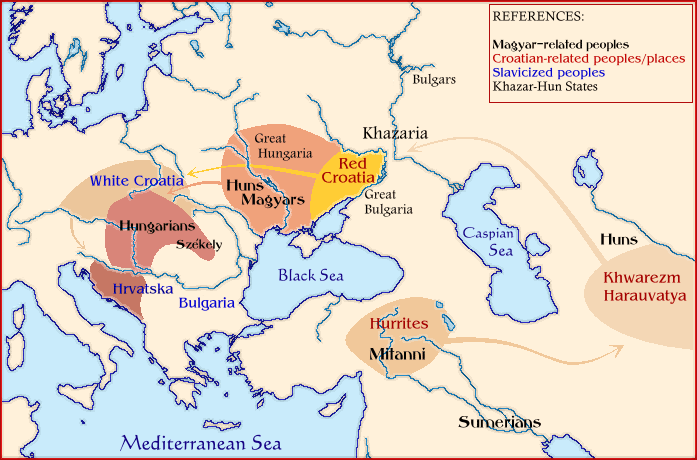lider30 je napisao/la:
Becar Stari je napisao/la:
Genetically the I2a2(I2a1) is most prevalent among peoples in the Western Balkans (most notably Dalmatia, Herzegovina, and parts of Bosnia). It is accepted as the oldest "native" gene in the region.

This picture shows that in B&H and Croatia live the same people.
To be fair, it suggests a correlation between the peoples of B&H and Croatia having a common link but not all of the people.
The Y-chromosome research only yields some data, not all of it. We cannot possibly determine all ancestry from limited genetic evidence but we can prove some. Also, the I2a marker is further broken down among Bosnia's constituent nations (Bosniaks, Serbs, Croats). The research I linked shows that BH Croats specifically carry the marker at a much higher frequency than Bosniaks and BH Serbs. About 71% of BH Croats or almost 3/4 carry the same marker as Croats in Croatia (especially in Dalmatia aka the center of medieval Croatia). Bosniaks are in second place with about 44% and BH Serbs trail last with only 30%. This data suggest several things and I referenced these things in my earlier posts.
It's evidence
against some romantic-chauvinistic nationalist Croatian claims over Bosniaks and being "Islamicized Croats." Croatian nationalism of the Dr. Ante Starcevic flavor considers all or most Bosniaks as really "Croats." This is not true. If anything, the majority of Bosniaks (at least a little more than 50%) are probably descended from medieval Serbs (or at least peoples to the south and east of Bosnia) and not medieval Croats. The Serbs might actually be right when they claim most of the Bosniaks as "Serbs" but not necessarily in the way they imagine. In the Ottoman Empire there were large scale migrations and significant depopulation and depopulation of certain areas ( not least of which being areas in Bosnia, Serbia-Kosovo, and Croatia).
Most of the medieval Bosnian Catholic Croats fled Bosnia for Catholic Croatia when the Ottomans took over save for some communities huddled around Franciscan run villages. This is evident among their descendants which mostly live in Croatia today. The highest concentration of the "Bosnjak" surname is in Croatia by far and is frequent among Catholics (not Orthodox or Muslim).


"Bosnjak" in the surname context simply means which area one originates from and not ethnicity. Bosnjak then means "Bosnian."
Bosnia's original medieval population was largely depopulated with the Ottomans since most of Bosnia's medieval population was nominally Catholic or belonged to the Bosnian church (krstjani - who themselves were a rogue sect of Catholicism and were mainly upper class nobility i.e. Hrvatinic, Sandjelic, etc. ). Very few were Orthodox along the banks of the Drina river bordering medieval Serbia. Most of the Catholics fled while a large portion of the Krstjani converted to Islam to hold their lands and titles. Bosnia was repopulated gradually with Muslims and Muslim converts from lands outside of Bosnia, especially Serbia as well as by people who belonged to the Serbian Orthodox Church. Some of the new settlers were converted Croats from Slavonia when the Habsburgs conquered the area from the Ottomans. The converted Croats from Slavonia resettled in Ottoman Bosnia mostly in the north region (Posavina) and the north west region (the Bihac pocket) in Bosanska Krajina or Turkish Croatia.
So yes, if we're going to be honest. A lot of Bosniaks can trace their roots to Serbia and this is evident in the fact that the Sandzak region still exists with a large Muslim population and Sandzak was the heart of the medieval Serb state Raska. Even Alija Izetbegovic's own roots are from Serbia as his grandparents migrated from the Belgrade pashaluk to Bosanski Samac. When Serbia became independent of the Ottoman Empire it tried to erase all traces of Islam in Serbia and succeeded for the most part except in heavily Muslim populated areas of Sandzak. Even the most notable Grand Vizier of the Ottoman Empire was Mehmed Pasha Sokolovic who was a converted Serb.
Medieval Bosnia largely died with the Ottoman Empire and its remnants only remain mostly among the Croat-Catholic population, most of which, don't even live in Bosnia anymore and don't identify with Bosnia.






